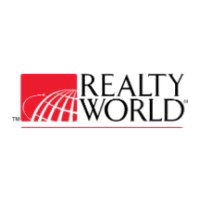Not sure if Pillar to Post is right for you?
Talk to a Franchise Advisor who can match you with your perfect franchise based on your goals, experience, and investment range.
Talk to an Expert
Pillar to Post
How much does Pillar to Post cost?
Initial Investment Range
$102,690 to $134,290
Franchise Fee
$60,500
Pillar to Post offers executive model franchises within a specified territory for the operation of a home inspection business offering unique residential inspection services.
Enjoy our partial free risk analysis below
Unlock the full risk analysis to access 9 more categories covering 100+ risks.
Pillar to Post March 25, 2025 FDD Risk Analysis
Free FDD Library AI Analysis Date: August 22, 2025
DISCLAIMER: Not Legal Advice - For Informational Purposes Only. Consult With Qualified Franchise Professionals.
Franchisor Stability Risks
Start HereDisclosure of Franchisor's Financial Instability
Low Risk
Explanation
The franchisor, Pillar To Post, Inc. (Pillar To Post), is a subsidiary of FS Brands, Inc., which provides its audited financial statements. These statements show consistent profitability and positive net worth for FS Brands, Inc. for the fiscal years ending 2023 and 2024. This indicates the parent company has the financial resources to support the franchise system, reducing the risk of instability due to poor franchisor financials. However, these financials represent a consolidated entity with multiple brands.
Potential Mitigations
- An accountant should review the parent company's financial statements, including all notes, to assess its overall financial health and ability to support this specific brand.
- Discuss the financial performance and stability of the Pillar To Post brand specifically with your financial advisor.
- Ask your attorney to clarify the extent of the parent company's legal guarantee of the franchisor's obligations.
High Franchisee Turnover
High Risk
Explanation
Item 20 data for non-exclusive outlets shows a significant number of franchise cessations. Over the past three years (2022-2024), the annual turnover rate, including terminations and non-renewals, has consistently been around 10-11%. This level of turnover could indicate potential issues with franchisee profitability, satisfaction, or other systemic challenges. The total number of franchised outlets has also decreased each year, from 440 at the start of 2022 to 376 at the end of 2024.
Potential Mitigations
- A franchise attorney should help you formulate questions to ask current and former franchisees about the reasons for this high turnover.
- Your business advisor can help you assess whether these turnover rates are typical for the home inspection industry.
- Your accountant should factor this turnover risk into your financial projections and break-even analysis.
Rapid System Growth
Medium Risk
Explanation
The number of non-exclusive franchised outlets has declined each year for the past three years, from 440 to 376. This indicates system contraction rather than growth. While the parent company's financials appear stable, a shrinking system could signal market saturation, franchisee dissatisfaction, or other challenges that may impact your potential for success. The support infrastructure may not be under strain from growth, but the reasons for the decline warrant investigation.
Potential Mitigations
- It is important to discuss the reasons for the system's contraction with the franchisor and existing franchisees.
- A business advisor can help you analyze the market conditions and competitive landscape that might be contributing to this trend.
- Your accountant should review the financial implications of operating within a shrinking system.
New/Unproven Franchise System
Low Risk
Explanation
Pillar To Post has been offering franchises since 1995, and its parent company, FS Brands, Inc., is part of a large, publicly-owned corporation. The management team has extensive experience in both the home inspection industry and franchising. Therefore, the risk associated with an unproven system or inexperienced management is not present.
Potential Mitigations
- Reviewing the management team's biographies in Item 2 with a business advisor can confirm their extensive experience.
- It is still wise to discuss the franchisor's long-term vision and system evolution with current franchisees.
- Your attorney can confirm the corporate structure and history detailed in Item 1.
Possible Fad Business
Low Risk
Explanation
This specific risk was not identified in the FDD Package. A fad business is one that capitalizes on a short-term trend without long-term consumer demand. Investing in a fad can be risky because once public interest wanes, the business may fail, but your contractual obligations to the franchisor would likely continue.
Potential Mitigations
- A business advisor can help you research the long-term demand and market trends for home inspection services.
- It is prudent to assess the business's resilience to economic cycles and shifting consumer preferences with a financial advisor.
- Engaging with industry associations can provide insight into the long-term stability of the home inspection market.
Inexperienced Management
Low Risk
Explanation
This specific risk was not identified in the FDD Package. The executive team members listed in Item 2 have substantial and long-term experience with Pillar To Post, its parent company FS Brands, Inc., or within the franchising and real estate service industries. Inexperienced management can lead to poor strategic decisions and inadequate franchisee support.
Potential Mitigations
- It is always a good practice to review the backgrounds of the management team in Item 2 with your business advisor.
- Speaking with current franchisees can provide valuable feedback on the quality and effectiveness of the management team's support.
- Your attorney can help you understand the roles and responsibilities of the key executives.
Private Equity Ownership
Low Risk
Explanation
Pillar To Post's ultimate parent is FirstService Corporation, a publicly-owned company, not a typical private equity firm with a short-term exit strategy. However, the Franchise Agreement in FA § 14.1 still grants the franchisor the broad right to assign the agreement to any entity, which could include a future private equity owner. This could potentially lead to changes in operational focus or support levels if the system is sold.
Potential Mitigations
- A franchise attorney should explain the implications of the franchisor's right to assign the agreement at its discretion.
- It is wise to research the corporate philosophy and history of the current parent company, FirstService Corporation, with your business advisor.
- Asking current franchisees about any changes in the system following past ownership transitions can provide useful insights.
Non-Disclosure of Parent Company
Low Risk
Explanation
The FDD discloses the parent company, FS Brands, Inc., and provides its audited consolidated financial statements in Exhibit E as required. FS Brands, Inc. also provides a Guarantee of Performance in Exhibit F. This transparency mitigates the risk of a financially weak or unsupported subsidiary being presented without its parent's backing.
Potential Mitigations
- Having an accountant review the parent company's financial statements is crucial for understanding the overall financial health of the enterprise.
- Your attorney should analyze the terms of the Parent Guarantee to confirm the extent of the backing it provides for the franchisor's obligations.
- Discuss the relationship and flow of support between the parent and the franchisor with your business advisor.
Predecessor History Issues
Low Risk
Explanation
This specific risk was not identified in the FDD Package. Item 1 states there is no predecessor to Pillar To Post, Inc. A predecessor is a company from which the franchisor acquired the major portion of its assets, which could carry historical issues like litigation or franchisee failures. The absence of a predecessor simplifies due diligence in this area.
Potential Mitigations
- Your attorney can confirm the corporate history as stated in Item 1 of the FDD.
- It is still beneficial to ask long-tenured franchisees about the history of the company to ensure no unstated transfers of assets occurred.
- A business advisor can help you investigate the brand's history through public records and online searches.
Pattern of Litigation
Medium Risk
Explanation
Item 3 discloses a past arbitration with a master franchisee alleging wrongful non-renewal and unfair trade practices, which was settled. More significantly, the Washington State Addendum in Exhibit I discloses an investigation and subsequent Assurance of Discontinuance regarding "no-poach" provisions in franchise agreements. While resolved, this history indicates past legal and regulatory scrutiny of the franchisor's practices, which you should be aware of.
Potential Mitigations
- Your franchise attorney must review the details of all past and present litigation and regulatory actions disclosed in Item 3.
- It is important to discuss any disclosed litigation with current and former franchisees to understand the context from their perspective.
- Assessing patterns in litigation with your attorney can help reveal potential systemic issues.
Disclosure & Representation Risks
Example Risk: Franchisee Financial Obligations
Blue Risk
Explanation
This risk involves the financial obligations that a franchisee must meet, including initial fees, ongoing royalties, and other required payments. Understanding these obligations is crucial for long-term success.
Potential Mitigations
- Carefully review the Franchise Disclosure Document (FDD) and consult with a franchise attorney to fully understand all financial commitments before signing.
- Conduct regular risk assessments
- Implement monitoring and reporting systems
Unlock Full Risk Analysis
Purchase the complete risk review to see all 102 risks across all 10 categories.
Financial & Fee Risks
Example Risk: Franchisee Financial Obligations
Blue Risk
Explanation
This risk involves the financial obligations that a franchisee must meet, including initial fees, ongoing royalties, and other required payments. Understanding these obligations is crucial for long-term success.
Potential Mitigations
- Carefully review the Franchise Disclosure Document (FDD) and consult with a franchise attorney to fully understand all financial commitments before signing.
- Conduct regular risk assessments
- Implement monitoring and reporting systems
Unlock Full Risk Analysis
Purchase the complete risk review to see all 102 risks across all 10 categories.
Legal & Contract Risks
Example Risk: Franchisee Financial Obligations
Blue Risk
Explanation
This risk involves the financial obligations that a franchisee must meet, including initial fees, ongoing royalties, and other required payments. Understanding these obligations is crucial for long-term success.
Potential Mitigations
- Carefully review the Franchise Disclosure Document (FDD) and consult with a franchise attorney to fully understand all financial commitments before signing.
- Conduct regular risk assessments
- Implement monitoring and reporting systems
Unlock Full Risk Analysis
Purchase the complete risk review to see all 102 risks across all 10 categories.
Territory & Competition Risks
Example Risk: Franchisee Financial Obligations
Blue Risk
Explanation
This risk involves the financial obligations that a franchisee must meet, including initial fees, ongoing royalties, and other required payments. Understanding these obligations is crucial for long-term success.
Potential Mitigations
- Carefully review the Franchise Disclosure Document (FDD) and consult with a franchise attorney to fully understand all financial commitments before signing.
- Conduct regular risk assessments
- Implement monitoring and reporting systems
Unlock Full Risk Analysis
Purchase the complete risk review to see all 102 risks across all 10 categories.
Regulatory & Compliance Risks
Example Risk: Franchisee Financial Obligations
Blue Risk
Explanation
This risk involves the financial obligations that a franchisee must meet, including initial fees, ongoing royalties, and other required payments. Understanding these obligations is crucial for long-term success.
Potential Mitigations
- Carefully review the Franchise Disclosure Document (FDD) and consult with a franchise attorney to fully understand all financial commitments before signing.
- Conduct regular risk assessments
- Implement monitoring and reporting systems
Unlock Full Risk Analysis
Purchase the complete risk review to see all 102 risks across all 10 categories.
Franchisor Support Risks
Example Risk: Franchisee Financial Obligations
Blue Risk
Explanation
This risk involves the financial obligations that a franchisee must meet, including initial fees, ongoing royalties, and other required payments. Understanding these obligations is crucial for long-term success.
Potential Mitigations
- Carefully review the Franchise Disclosure Document (FDD) and consult with a franchise attorney to fully understand all financial commitments before signing.
- Conduct regular risk assessments
- Implement monitoring and reporting systems
Unlock Full Risk Analysis
Purchase the complete risk review to see all 102 risks across all 10 categories.
Operational Control Risks
Example Risk: Franchisee Financial Obligations
Blue Risk
Explanation
This risk involves the financial obligations that a franchisee must meet, including initial fees, ongoing royalties, and other required payments. Understanding these obligations is crucial for long-term success.
Potential Mitigations
- Carefully review the Franchise Disclosure Document (FDD) and consult with a franchise attorney to fully understand all financial commitments before signing.
- Conduct regular risk assessments
- Implement monitoring and reporting systems
Unlock Full Risk Analysis
Purchase the complete risk review to see all 102 risks across all 10 categories.
Term & Exit Risks
Example Risk: Franchisee Financial Obligations
Blue Risk
Explanation
This risk involves the financial obligations that a franchisee must meet, including initial fees, ongoing royalties, and other required payments. Understanding these obligations is crucial for long-term success.
Potential Mitigations
- Carefully review the Franchise Disclosure Document (FDD) and consult with a franchise attorney to fully understand all financial commitments before signing.
- Conduct regular risk assessments
- Implement monitoring and reporting systems
Unlock Full Risk Analysis
Purchase the complete risk review to see all 102 risks across all 10 categories.
Miscellaneous Risks
Example Risk: Franchisee Financial Obligations
Blue Risk
Explanation
This risk involves the financial obligations that a franchisee must meet, including initial fees, ongoing royalties, and other required payments. Understanding these obligations is crucial for long-term success.
Potential Mitigations
- Carefully review the Franchise Disclosure Document (FDD) and consult with a franchise attorney to fully understand all financial commitments before signing.
- Conduct regular risk assessments
- Implement monitoring and reporting systems
Unlock Full Risk Analysis
Purchase the complete risk review to see all 102 risks across all 10 categories.









